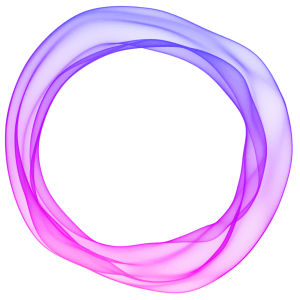What is a Newsletter and Why You Need One
Thinking of starting your own publication? Start here.

Every day, we wade through a tidal wave of information, both online and offline. However, amid this steady stream of data, there exists an underutilized tool — newsletters. They provide a lifeline, connecting us to vital insights that often slip away unnoticed.
Without newsletters, we remain vulnerable to the overwhelming influx of content, making it challenging to discern the essential from the trivial.
In this guide, we'll shed light on everything you need to know about newsletters, giving you a deeper understanding of their power to transform your information consumption.
Newsletter definition
A newsletter is a periodic publication that businesses or individuals send to subscribers via email. As a fusion of mainstream news and personal letters, newsletters are primarily geared toward sharing updates, trending topics, industry news, product launches, or educational information with a specific audience.
Unlike normal emails, newsletters follow a structured layout and provide an array of content instead of just straightforward communication. They are designed to cater to the reader's interest, maintain an ongoing connection, and often encourage customer engagement.
Common elements found in newsletters include:
- Expressive headers
- Visuals
- Call-to-action buttons
- External links
- Segmented content to foster an enjoyable reading experience
Comparing newsletters with traditional media, such as newspapers or books, presents an interesting contrast. Traditional media supply a broad spectrum of topics to a general audience, whereas newsletters are more specialized and tailored. They cut through the noise, delivering handpicked content right to the subscriber's inbox instead of waiting for the reader to come to them.
While newspapers and books strive to cover the whole gamut of news and information, newsletters focus on a specific theme or subject, making them an invaluable resource for niche audiences. Furthermore, with their digital format, newsletters overcome geographical restraints, ensuring global accessibility, interactivity, and immediate distribution — features that are not usually associated with newspapers or books.
In essence, a newsletter stands as a unique communication tool that marries the immediacy of emails and the targeted appeal of traditional media. It is the modern answer to information overload, providing a curated path that leads readers to insights that truly resonate with them.
How to create a newsletter
When it comes to creating a newsletter, the process may seem daunting at first. But don't fret — there's only a few steps involved.
So let's break it down together.
Step 1: Choose the right tool
The first step is choosing your tool belt. It's a personal pick, reflecting your specific needs and preferences. Some options I've come across are Ghost, Beehiiv, ConvertKit and Substack.
Ghost is awesome for those seeking a straightforward, clean writing environment, while Beehiiv is quite the eye candy with its crisp, punchy templates. ConvertKit is a favorite amongst my fellow content creators, but if you're after a networked approach, Substack serves as a decent solution. Just remember: the "right" tool hinges on your own unique situation.
Step 2: Pick a format or template
Once you've sorted your tools, it's time to contemplate what type of newsletter feels most authentic to you. While diving around the web, I came across this really useful piece on Ghost's blog that highlighted six distinct formats:

- Reporting. Think journalistic, frequently published insights covering one-of-a-kind viewpoints.
- Analysis. This format usually dives deeper into complex matters, often leveraging charts or graphs to explain nuanced subjects.
- Curation. Are you a tastemaker who loves to sift through content abysses? This format might be your calling, allowing you to share thematically-linked resources with readers.
- Artistic. Ideal for creatives seeking to unveil their unique perceptions about life and everything in between.
- Practical. Straightforward, utility-focused newsletters teaching readers 'how to do X.'
- Hybrid. A combination of all the above, this format fosters innovation in communication.
Choose the format that best aligns with your audience's needs and your own creativity.
Step 3: Find your niche
Now, you need to decide on your newsletter's niche. Identifying your newsletter's niche is an important step in establishing its identity and direction. Your niche will serve as the underlying theme and focus that patterns all elements of your newsletter, making it uniquely yours.
One example to consider is the creator economy, which has seen significant growth and offers an abundance of opportunities for exploration. If this captures your interest, you can draw inspiration from the newsletters mentioned in the comprehensive list below, which look into multiple aspects of the creator economy.

These newsletters showcase diverse perspectives, insights, and narratives on the subject, offering various formats and focuses. For instance, 'The Ghost Newsletter' highlights facets of the creator economy through weekly, actionable insights.
Whichever niche you choose, it should be something that syncs with both your passion and the interests of your target audience.
Step 4: Commit to a frequency
Once the niche is zeroed in, it's important to ensure that your newsletters are sent out at a regular pace. The rhythm of daily, weekly, or monthly newsletters primarily depends on the depth of content, your audience's preference, and your overall availability.
For example, there are varied frequencies in the creator economy newsletters we touched on above. Creator Economy by The Information that lands in your inbox four times a week as opposed to Li's Letter, which only published one time per month.
Your commitment to frequency directly impacts your readers' anticipation and your deliverable's consistency. Balancing these factors will give you the ideal frequency and nudge you toward an engaged and loyal reader base.
Step 5: Start writing and iterate as you go
Finally, the most essential step: start writing! You won't always get things right on the first, second or even tenth try, and that's perfectly okay. Writing is a journey filled with constant learning and iteration. Use feedback and newsletter performance metrics as your compass, adjusting as you go along.
Remember, swing for the fences; you'll learn along the way. That newsletter you're imagining? Bring it to life and let your passion and originality shine through.
What makes a newsletter successful?
Unlocking the secret recipe for a triumphant newsletter is a blend of three crucial components: specificity, engagement achievement, and longevity. Each element shines a guiding light as you craft your unique publication.
Let's take a closer look at each:
- Specificity. Your newsletter is like a fine gourmet dish, and your audience has distinct tastes. The first step to success is knowing who's coming to the table and catering to their desires. Hone in on your audience's interests, offering content that genuinely engages them and sparks joyful, intellectual, or creative connections. It's all about creating an intimate, up-close-and-personal connection with your readers, making them feel like every issue was crafted just for them.
- Engagement Achievement. In a world where attention spans are continuously shrinking, the ability to achieve meaningful engagement with your audience is a game changer. Track critical engagement indicators, such as time spent on your newsletter and social media shares, to comprehend reader behavior and adjust your content strategy accordingly. This data-driven approach, combined with efforts to cultivate and sustain subscriber growth and financial stability, paves the way to a thriving newsletter.
- Longevity. In the newsletter realm, the race doesn't always favor the swift but those who keep moving. The most formidable newsletters thrive over time, forging trust with their audience through sustained, quality publication. Don't rush; allow your newsletter to grow organically, and you'll see that perseverance, along with dedicated consistency, yields trust and positions your newsletter as a mainstay in your readers' lives.
Marrying specificity in your content, initiating healthy metrics, and exhibiting commitment to longevity are the makings of a successful newsletter. Nurture these elements and watch your newsletter grow, command loyalty, and create a distinctive place in your readers' inboxes.
Where to find example newsletters?
As we wind up, here's another step — tracing the tracks of others before leaving your own. Knowing where to find great newsletters is integral to setting the stage for your newsletter journey. Two platforms have personally been my go-to for a wealth of ideas and inspiration.
The first stop on the newsletter discovery train is none other than Substack's Staff Picks. This charming corner of the internet features an eclectic collection of Substack's favorite newsletters, handpicked by the team for their irresistible lure. These newsletters cover every conceivable topic and are so expertly crafted they make building an audience seem effortless. A visit here is sure to leave you brimming with fresh ideas.
Next, let's hop onto Ghost Explore to see the most followed and highest-paid writers on the platform. Browsing its colorful assortment of newsletters is a revelation unto itself, spanning various industries and themes. It's like strolling through an international bazaar of ideas — plenty to pique your interest.
And with that, I leave you with all the information you need to start your own newsletter. All the best as you start this long but rewarding journey!


